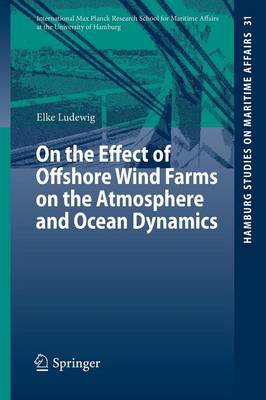Renewable energy resources now play an essential role in the energy supply debate, and especially a new interest in wind energy has resulted in the intensified construction of wind farms. Thanks to the growing demand for renewable energy, offshore wind farms (OWFs) are increasingly gaining in popularity, since yields over sea are greater and more reliable than over land. Against this background it is becoming particularly urgent to determine whether and if so to what extent such OWF expansion affects our oceans and local climates. OWFs produce a downstream wind speed reduction, the so-called wind-wake effect, which impacts atmospheric...
Read more
Renewable energy resources now play an essential role in the energy supply debate, and especially a new interest in wind energy has resulted in the intensified construction of wind farms. Thanks to the growing demand for renewable energy, offshore wind farms (OWFs) are increasingly gaining in popularity, since yields over sea are greater and more reliable than over land. Against this background it is becoming particularly urgent to determine whether and if so to what extent such OWF expansion affects our oceans and local climates. OWFs produce a downstream wind speed reduction, the so-called wind-wake effect, which impacts atmospheric boundary layers, alters local wind characteristics and in turn affects ocean dynamics. This book will help readers to understand in detail these OWF-induced changes in the atmosphere and ocean by analyzing model simulations and measurements. In this context, OWF-induced upwelling and downwelling are key aspects.
- ISBN13 9783319086408
- Publish Date 20 November 2014
- Publish Status Active
- Publish Country CH
- Imprint Springer International Publishing AG
- Edition 2015 ed.
- Format Paperback
- Pages 162
- Language English
